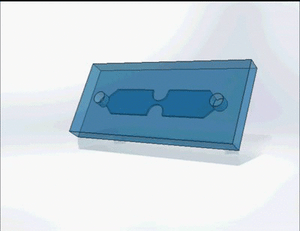
Extensional Viscosity Technical Note - Exclude Shear Contribution
Extensional Viscosity Technical Note - How to Exclude Shear Contribution to Extensional Viscosity on Power Law Fluids
Rheological measurements help us describe the complicated behavior of materials such as gels, polymer solutions and suspensions. The question “Is this material a solid or a liquid?” has no simple response. The answer lies in how much of the energy applied to make the material flow is elastically stored and how much is lost by viscous dissipation. This duality in the material response results in a wide spectrum of characteristics, where systems with similar shear viscosity may exhibit significantly different extensional viscosity.
In order to predict the process conditions that will optimize fluid flow or to characterize the final product properties, a thorough rheological characterization of materials in both shear and extensional flow conditions is recommended. e-VROC® technology provides R&D and QC scientists with a valuable tool to characterize and categorize elasticity of viscoelastic fluids. Applications include fiber spinning, roll coating, blow molding, inkjet printing, film drawing and flow through porous media.
In this study we present measurements of apparent extensional and shear viscosities for two non-Newtonian shear thinning fluids (0.5 % water solution of Xanthan gum and 0.5% PVDF in MNP) and one Newtonian mineral standard oil N35 Lot. 14301 (Cannon Instruments). Combining the shear and extensional data allows us to exclude shear from the extensional flow and provide a better characterization of the materials response to planar extension.

.jpeg?width=300&name=Woman%20scientist%2c%20documents%20and%20hands%20writing%20_575258496-min(1).jpeg)

